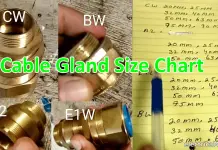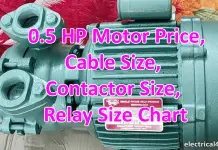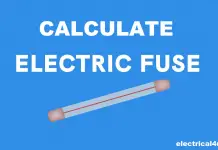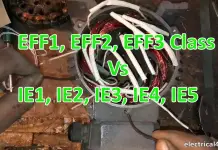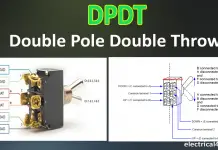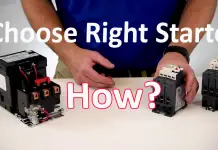Active and Passive Components:
The circuit components are classified into two categories such as
- Active Components
- Passive Components
Active Components:
The circuit component is ability to supply energy to other circuit which components can be called active components. Or ability to inject power to a circuit
[wp_ad_camp_1]
Example: Voltage sources and current sources. Active components include amplifying components such as transistors, triode vacuum tubes (valves), and tunnel diodes.
Integrated circuits
- Digital
- Analog
- Hall effect sensor –senses a magnetic field.
- Current sensor – Senses a current through it
Current sources:
- Filament lamp (indicator lamp)
- Vacuum fluorescent display (VFD) (preformed characters, 7 segment, starburst)
- Cathode ray tube (CRT) (dot matrix scan, radial scan (e.g. radar), arbitrary scan (e.g. oscilloscope)) (monochrome & colour)
- LCD (preformed characters, dot matrix) (passive, TFT) (monochrome, colour)
- Neon (individual, 7 segment display)
- LED (individual, 7 segment display, starburst display, dot matrix)
- Flap indicator (numeric, preprinted messages)
- Plasma display (dot matrix)
Obsolete:
- Incandescent filament 7 segment display (aka ‘Numitron’)
- Nixie Tube
- Dekatron (aka glow transfer tube)
- Magic eye tube indicator
- Penetron (a 2 colour see-through CRT)
Diodes
Conduct electricity easily in one direction, among more specific behaviors.
- Diode, Rectifier, Bridge rectifier
- Schottky diode, hot carrier diode – super fast diode with lower forward voltage drop
- Zener diode – Passes current in reverse direction to provide a constant voltage reference
- Transient voltage suppression diode (TVS), Unipolar or Bipolar – used to absorb high-voltage spikes
- Varactor, Tuning diode, Varicap, Variable capacitance diode – A diode whose AC capacitance varies according to the DC voltage applied.
- Various examples of Light-emitting diodes
- Light-emitting diode (LED) – A diode that emits light
- Photodiode – Passes current in proportion to incident light
- Avalanche photodiode with internal gain
- Solar Cell, photovoltaic cell, PV array or panel, produces power from light
- DIAC (Diode for Alternating Current), Trigger Diode, SIDAC) – Often used to trigger an SCR
- Constant-current diode
- Peltier cooler – A semiconductor heat pump
- Tunnel diode – very fast diode based on quantum mechanical tunneling
Sources of electrical power sources:
- Battery – acid- or alkali-based power supply
- Fuel cell – an electrochemical generator
- Power supply – usually a main hook-up
- Photo voltaic device – generates electricity from light
- Thermo electric generator – generates electricity from temperature gradients
- Electrical generator – an electromechanical power source
- Piezoelectric generator – generates electricity from mechanical strain
- Van de Graaff generator – generates electricity from friction
Transistors
Transistors were considered the invention of the twentieth century that changed electronic circuits forever. A transistor is a semiconductor device used to amplify and switch electronic signals and electrical power.
[wp_ad_camp_1]
See: History of Electrical Engineering
- Transistors
- Bipolar junction transistor (BJT, or simply “transistor”) – NPN or PNP
- Photo transistor – Amplified photodetector
- Darlington transistor – NPN or PNP
- Photo Darlington – Amplified photodetector
- Sziklai pair (Compound transistor, complementary Darlington)
- Field-effect transistor (FET)
- JFET (Junction Field-Effect Transistor) – N-CHANNEL or P-CHANNEL
- MOSFET (Metal Oxide Semiconductor FET) – N-CHANNEL or P-CHANNEL
- MESFET (MEtal Semiconductor FET)
- HEMT (High electron mobility transistor)
- Thyristors
- Silicon-controlled rectifier (SCR) – Passes current only after triggered by a sufficient control voltage on its gate
- TRIAC (TRIode for Alternating Current) – Bidirectional SCR
- Unijunction transistor (UJT)
- Programmable Unijunction transistor (PUT)
- SIT (Static induction transistor)
- SITh (Static induction thyristor)
- Composite transistors
- IGBT (Insulated-gate bipolar transistor)
Optoelectronic devices
- Opto-electronics
- Opto-Isolator, Opto-Coupler, Photo-Coupler – Photodiode, BJT, JFET, SCR, TRIAC, Zero-crossing TRIAC, Open collector IC, CMOS IC, Solid state relay (SSR)
- Opto switch, Opto interrupter, Optical switch, Optical interrupter, Photo switch, Photo interrupter
- LED display – Seven-segment display, Sixteen-segment display, Dot-matrix display
Passive Components:
The circuit components are said to be passive, if it absorbs energy.
Example: Resistor, Inductor and Capacitor.
Resistors
- SMD resistors on a backside of a PCB
- Pass current in proportion to voltage (Ohm’s law) and oppose current.
- Resistor – fixed value
- Power resistor – larger to safely dissipate heat generated
- SIP or DIP resistor network – array of resistors in one package
- Variable resistor
- Rheostat – two-terminal variable resistor (often for high power)
- Potentiometer – three-terminal variable resistor (variable voltage divider)
- Trim pot – Small potentiometer, usually for internal adjustments
- Thermistor – thermally sensitive resistor whose prime function is to exhibit a large, predictable and precise change in electrical resistance when subjected to a corresponding change in body temperature.
- Humistor – humidity-varied resistor
- Photoresistor
- Memristor
- Varistor, Voltage Dependent Resistor, MOV – Passes current when excessive voltage is present
- Resistance wire, Nichrome wire – wire of high-resistance material, often used as a heating element
- Heater – heating element
Also see: 7 Types of Voltage Level ELV LV MV HV EHV Ultra High Voltage
Capacitors Components:
Capacitors store and release electrical charge. They are used for filtering power supply lines, tuning resonant circuits, and for blocking DC voltages while passing AC signals, among numerous other uses.[wp_ad_camp_1]
- Capacitor
- Integrated capacitors
- MIS capacitor
- Trench capacitor
- Fixed capacitors
- Ceramic capacitor
- Film capacitor
- Electrolytic capacitor
- Aluminum electrolytic capacitor
- Tantalum electrolytic capacitor
- Niobium electrolytic capacitor
- Polymer capacitor, OS-CON
- Supercapacitor (Electric double-layer capacitor)
- Nanoionic supercapacitor
- Lithium-ion capacitor
- Mica capacitor
- Vacuum capacitor
- Variable capacitor – adjustable capacitance
- Tuning capacitor – variable capacitor for tuning a radio, oscillator, or tuned circuit
- Trim capacitor – small variable capacitor for seldom or rare adjustments of LC-circuits
- Vacuum variable capacitor
- Capacitors for special applications
- Power capacitor
- Safety capacitor
- Filter capacitor
- Light-emitting capacitor
- Motor capacitor
- Photoflash capacitor
- Reservoir capacitor
- Capacitor network (array)
- Varicap diode – AC capacitance varies according to the DC voltage applied
Also see: Types of Capacitors Based on Material Used
Magnetic (inductive) devices:
Electrical components that use magnetism in the storage and release of electrical charge through current:
- Inductor, coil, choke
- Variable inductor
- Saturable Inductor
- Transformer
- Magnetic amplifier (toroid)
- ferrite impedances, beads
- Motor / Generator
- Solenoid
- Loudspeaker and microphone
Also see:
- What happens if DC supply given to the Inductor
- What is Inductor
- Why Capacitor and Inductor are used in Filtering Circuit
- Why Inductors Use In Filtering Circuit and VFDs
Transducers, sensors, detectors
- Transducers generate physical effects when driven by an electrical signal, or vice versa.
- Sensors (detectors) are transducers that react to environmental conditions by changing their electrical properties or generating an electrical signal.
- The transducers listed here are single electronic components (as opposed to complete assemblies), and are passive (see Semiconductors and Tubes for active ones). Only the most common ones are listed here.
- Audio
- Loudspeaker – Electromagnetic or piezoelectric device to generate full audio
- Buzzer – Electromagnetic or piezoelectric sounder to generate tones
- Position, motion
- Linear variable differential transformer (LVDT) – Magnetic – detects linear position
- Rotary encoder, Shaft Encoder – Optical, magnetic, resistive or switches – detects absolute or relative angle or rotational speed
- Inclinometer – Capacitive – detects angle with respect to gravity
- Motion sensor, Vibration sensor
- Flow meter – detects flow in liquid or gas
- Force, torque
- Strain gauge – Piezoelectric or resistive – detects squeezing, stretching, twisting
- Accelerometer – Piezoelectric – detects acceleration, gravity
- Thermal
- Thermocouple, thermopile – Wires that generate a voltage proportional to delta temperature
- Thermistor – Resistor whose resistance changes with temperature, up PTC or down NTC
- Resistance Temperature Detector (RTD) – Wire whose resistance changes with temperature
- Bolometer – Device for measuring the power of incident electromagnetic radiation
- Thermal cutoff – Switch that is opened or closed when a set temperature is exceeded
- Magnetic field (see also Hall Effect in semiconductors)
- Magnetometer, Gauss meter
- Humidity
- Hygrometer
- Electromagnetic, light
- Photo resistor – Light dependent resistor (LDR)
Networks
Components that use more than one type of passive component:
- RC network – forms an RC circuit, used in snubbers
- LC Network – forms an LC circuit, used in tunable transformers and RFI filters.
Content Credits: Wikipedia
Creative Common License: https://simple.wikipedia.org/wiki/Wikipedia:Text_of_Creative_Commons_Attribution-ShareAlike_3.0_Unported_License

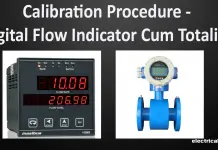
![What is Normally Open & What is Normally Closed [Video Included] What is NO and NC](https://www.electrical4u.net/wp-content/uploads/2020/09/What-is-NO-and-NC-218x150.png)


